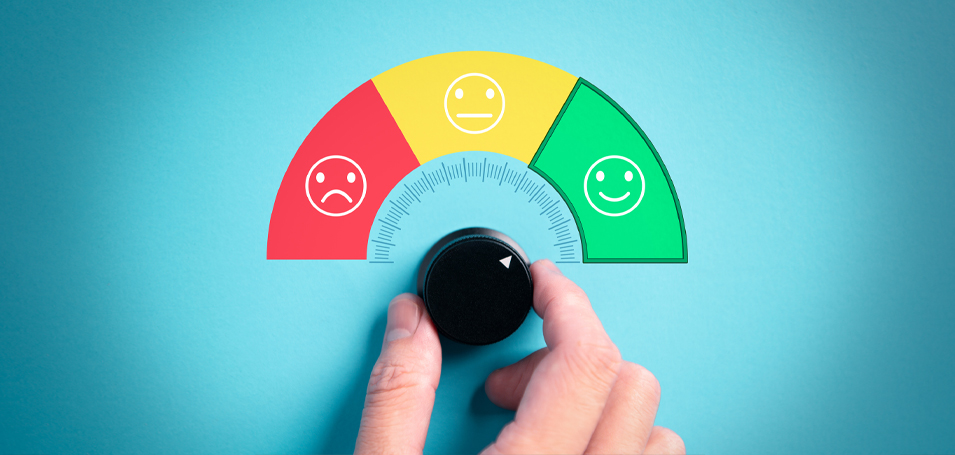A common trap among business leaders everywhere is assuming their customers already know everything about their product or service. But without the day-in, day-out effort you spend, they may not be aware of all the features, benefits, and best practices that enable them to maximize the value of your offerings. This knowledge gap can lead to frustration, underutilization, and dissatisfaction.
That’s why proactively teaching your customers leads to better outcomes for them and increased loyalty and retention for your business.
Bolstered by Thought Industries’ knowledge and insight into external learning technology, this article will share practical and innovative advice about creating tailored learning experiences that resonate with your users. Learn how to harness the power of this strategic tool to improve your customer experience and stay ahead in an increasingly competitive global marketplace.
What Is Customer Education?
A good place to start is by defining customer education. What exactly is it, and what does it entail? Put simply, customer education is the act of giving clients the knowledge and skills they need to use a product or service.
It often includes:
- Tutorials
- Webinars
- User guides
- Interactive training sessions
- Courses
- Certifications
What value does customer education hold in the current business environment? Its significance continues to grow alongside the need to provide an exceptional user experience in our digital-focused world. Educating customers about your product or service improves their experience, making them more loyal and less apt to churn.
In other words, customers who understand all the ins and outs of your product are more likely to use it to its fullest potential and know the value it provides, boosting their satisfaction. When your customers have the right information, your business will thrive, enjoying increased engagement and growth.
Finally, it’s important to realize that customer education supports broader business goals. It does so by facilitating the creation of a knowledgeable customer base who advocate for the brand and contribute to its long-term success. That third-party promotion often proves invaluable.
Key Benefits of Customer Education
It’s time to examine several key advantages of customer education and how they can benefit your business. We discuss these benefits below, from improving customer retention to driving more revenue and growth.
1. Improved Customer Retention
Businesses often implement various customer retention strategies to keep their clients coming back for more. These can include discounts and coupons, loyalty programs, and tailored communications.
However, one of the best ways to retain customers is to improve their satisfaction through education. Give them the information they need to use your product or service effectively, and you’ll increase the odds they’ll return.
Ikea is an excellent example of a company that builds loyalty via interactive design and educational tools online. The successful furniture brand makes it easy for customers to visualize how its products will fit into their homes. Additionally, its video tutorials help folks avoid frustration by explaining how to assemble the furnishings they’ve purchased.
2. Enhanced Customer Satisfaction
Here’s a notable statistic: Two-thirds of customers will make repeated purchases if they believe a company values them. How can you better connect with and convey your appreciation for your customers than by teaching them about your product?
Your business demonstrates that customers mean more than a purchase by focusing on customer success through education. These efforts indicate a commitment that extends beyond transactions—a genuine care that your customers’ experience sits atop your priority list.
3. Increased Revenue and Profitability
Recent research by Deloitte found that companies prioritizing their customers are 60% more profitable than those who don’t. So, if you’re looking to drive sales (who isn’t?), pour your energy into developing highly effective customer education programs. Improving customer satisfaction through education with these initiatives will increase customer engagement, forming a direct link to boosting your company’s profitability and market competitiveness.
Also, it’s worth noting that the benefits of e-learning for businesses include cost savings on in-person training and improved scalability of educational programs.
Implementing an Effective Customer Education Program
Now that you can see why teaching your customers about your products is so important, we’ll discuss exactly how to pull this off. Implementing customer education best practices like those mentioned below will help you create and run your own successful program.
Identify Learning Needs
First, determine what your customers need to know to use your products effectively.
To accomplish this, follow these steps:
- Analyze customer feedback, support tickets, and usage data to identify common challenges and questions.
- Use surveys, interviews, and analytics tools to gather detailed insights and spot knowledge gaps.
- Ask your customer service and sales teams to share their opinions.
This comprehensive approach will help ensure that you’re developing a program that addresses all customer requirements for satisfaction and information.
Develop Comprehensive Learning Materials
The next step is to create learning materials that are engaging, helpful, and tailored to your customer needs.
Some tips as you do this:
- Use clear and concise language that’s easy to understand.
- Incorporate meaningful images to create visual interest.
- Make sure all your materials are accessible across different devices.
Keep in mind that there are different ways to convey information, from instructional videos and webinars to detailed manuals and interactive courses. One format might speak to one audience better than another, so choose wisely.
Also, update the content regularly to stay relevant, and consider incorporating real-life scenarios and examples to make the learning experience practical and relatable to your customers.
Measure Success and Impact
It goes without saying that you must be able to measure the success and impact of your customer education program. Why? So you can understand how effective it is, identify areas for improvement, and demonstrate to others how it has contributed to broader business goals.
Use surveys, feedback forms, and analytics tools to gather and analyze the data.
Plan to track key learning metrics, including:
- Engagement rates
- Video views
- Course completions
In addition, pay close attention to how your customer training benefits business outcomes like profitability, customer satisfaction, and retention rates. You may be surprised by how much customer education moves the needle.
Finally, remember to frequently review and continuously improve your program, aligning it with your company’s overall business goals and strategies.
Reap the Rewards of Customer Education
You’ve probably spent a lot of time building and marketing your product or service. But some of that time also needs to be dedicated to teaching your customers how to extract the most value from it.
The benefits and importance of customer education are plentiful and significant: Improved customer satisfaction, engagement, loyalty, and retention, as well as the direct links between these programs and increasing revenue with customer education. Customers who understand how to use your offerings will appreciate them, advocate for your brand, and repeatedly return to buy more.If your business is ready to unlock the power of its own customer education program, contact Thought Industries today for a free demo. Ti has powered the learning business for over a decade with its innovative external learning systems. Our team is standing by, eager to help you build an intuitive and engaging online learning experience that will accelerate your revenue growth.



